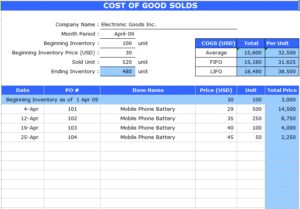
We believe everyone should be able to make financial decisions with confidence. Sign up to get updates from MoneyGeek including how to overcome your financial headwinds, hack your finances, and build wealth. You only get one chance to retire, and the stakes are too high to risk getting it wrong. This course will show you how to calculate your retirement number accurately the very first time – with confidence – using little-known tricks and tips that make the process easy.
Compounding investment returns
Much like a snowball at the top of a hill, compound interest grows your balances a small amount at first. Like the snowball rolling down the hill, as your wealth grows, it picks up momentum growing by a larger amount each period. The longer the amount of time, or the steeper the hill, the larger the snowball or sum of money will grow.
I hope you found this article helpful and that it has shown you how what is an organizational chart powerful compounding can be—and why Warren Buffett swears by it. The effective annual rate (also known as the annual percentage yield) is the rate of interest that you actually receive on your savings or investment aftercompounding has been factored in. Now that you understand how powerful compound interest can be, let’s break down how it’s calculated. Compound interest works by adding earned interest back to the principal. This generates additionalinterest in the periods that follow, which accelerates your investment growth. A compounding interest calculator is a tool that helps individuals determine the growth of their investment over time.
Growth Chart
- If someone invests $50,000 for a year, the amount of interest earned will depend on the interest rate offered by the financial institution.
- Using our compound interest calculator, $2,000,000 invested can earn up to $335,480 in interest over five years.
- It takes into account the initial deposit, interest rate, compounding frequency, and duration of the investment.
- You can also use this calculator to solve for compounded rate of return, time period and principal.
- Compound interest has dramatic positive effects on savings and investments.
- Because many investments do not pay a consistent interest rate, but are rather the average of a fluctuating market, the compound annual growth rate (CAGR) assumes compound growth over time to provide a projected rate of return.
A compound interest calculator is a tool for calculating the growth of an investment or loan over time, taking into account both the initial amount and the interest earned. It factors in compounding periods (annually, quarterly, semi-annually, monthly, weekly, and daily), interest rates, and time to provide accurate results. Individuals and financial professionals commonly use this calculator to plan and project future earnings or debts. A daily compound interest calculator calculates what you’ll earn (or be charged) every day. With monthly, you’ll earn (or be charged) interest each month, and with annual, you’ll earn (or be charged) every year (an annual percentage).
It differs from simple interest, which is calculated solely on the principal amount. If the nominal annual interest rate is 4%, a beginning balance of $100,000 will be worth $219,112.31 after twenty years if compounded annually. Using our compound calculator, $20,000,000 invested in a fixed deferred annuity can earn up to $3,354,800 in interest over five years. Compound interest is a powerful financial concept that can significantly boost your savings and investments over time. The key to harnessing its potential lies in understanding how it works and how to apply it how to make entries for purchase to your financial plans. Compound interest is often compared to a snowball that grows over time.
Simple interest refers only to interest earned on the principal balance; interest earned on interest is not taken into account. To see how compound interest differs from simple interest, use our simple interest vs compound interest calculator. Just enter your beginning balance, the regular deposit amount at any specified interval, the interest rate, compounding interval, and the number of years you expect to allow your investment to grow. If you left your money in that account for another year, you’ll earn $538.96 in interest in year two, for a total irs cp2000 letter overview of $1,051.63 in interest over two years. You earn more in the second year because interest is calculated on the initial deposit plus the interest you earned in the first year. You may, for example, want to include regular deposits whilst also withdrawing a percentage for taxation reporting purposes.

We can’t, however, advise you about where toinvest your money to achieve the best returns for you. Instead, we advise you to speak to a qualified financial advisor for advice based upon your owncircumstances. Failing to plan effectively can lead to missed investment opportunities, inadequate retirement savings, and increased financial stress.
When is my interest compounded?
As a trusted insurance agency, annuity broker, and retirement planner with 15 years of experience, we are committed to helping you find the best solutions at the lowest costs. With compound interest investments, it’s better to wait and allow these investments to grow, but with money you owe, it’s usually best to pay down debt as quickly as possible — especially if your interest rate is high. The MoneyGeek compound interest calculator uses a pie chart to show you the initial amount you contributed in purple, the total interest you earned in green and your total contributions in blue.
How much interest will I earn on 50,000 in a year?
But the longer you take to pay off your compound interest debts, the higher they will become. Compound interest occurs when interest is added to the original deposit – or principal – which results in interest earning interest. Financial institutions often offer compound interest on deposits, compounding on a regular basis – usually monthly or annually. Compound interest takes into account both interest on the principal balance and interest on previously-earned interest.
